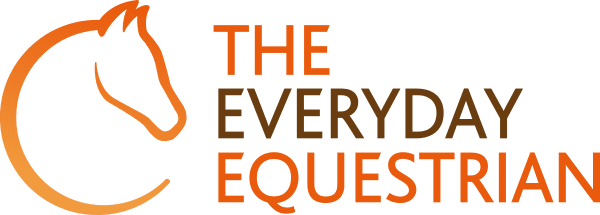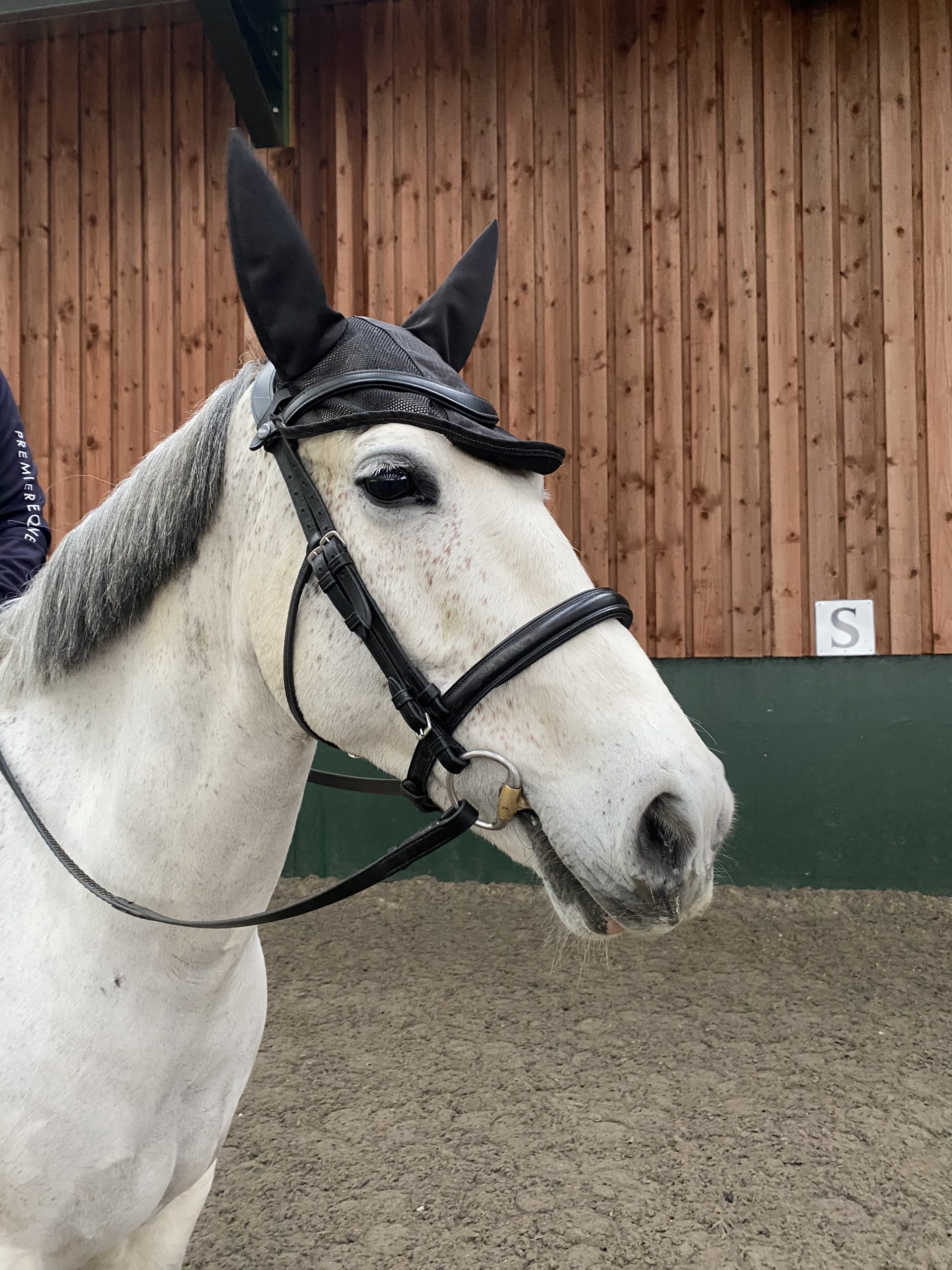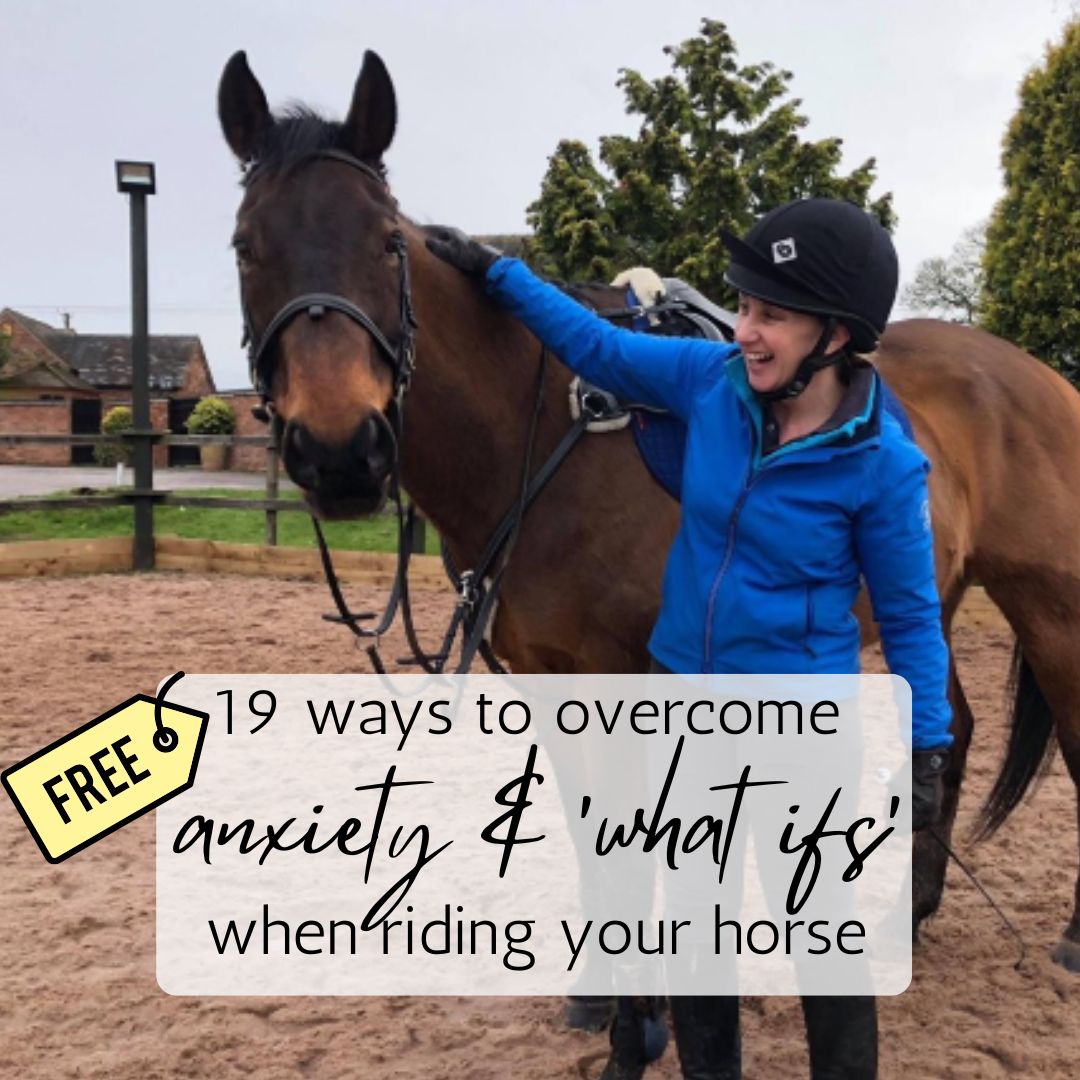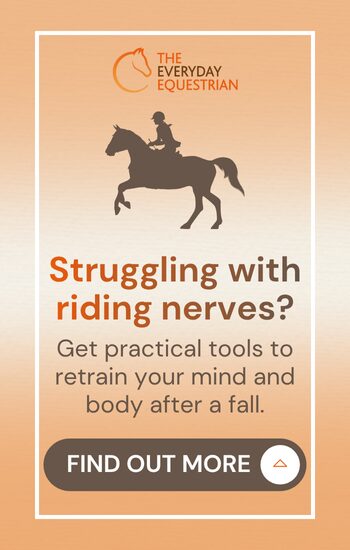Spooky horses can be tricky and their antics can chip away at your riding confidence. Most of us at one time or another will have experienced a horse that spooks and it can be very off putting. It’s part and parcel of partnering up with a fight or flight animal that has a mind of its own and sometimes even it’s own agenda. What is important however is to have a plan of action in place to manage and ride these spooky horses effectively and safely, so that you can both enjoy each other’s company.
Before you do anything, the number one priority is that you and your horse stay safe and in one piece. Ask for professional help and support sooner rather than later, if you are really struggling to cope with your horse’s spooky behaviour. Often, some extra support can make all the difference in how you manage a spooky horse and can help you to keep your cool when challenges present themselves.
Let’s take a closer look at some of the steps you can take to assist you in managing a spooky horse whilst still keeping your confidence.
Step One
Always make sure that your horse’s spooky behaviour is not caused by pain. If your horse has always been solid as a rock, and suddenly starts behaving out of character, then get the following things checked by experienced and qualified professionals:
- Saddle, bridle and bit checks for fit, safety and comfort by an expert
- Have the horse’s teeth checked for problems
- Have the horse assessed by a Veterinary Physiotherapist or Equine Massage Therapist for signs of soreness and pain
- Ask your vet to assess the horse for signs of undiagnosed injury or lameness
- Ask your farrier for information about the horse’s foot quality and balance, and any signs of uneven wear or discomfort
It is always best to get these things checked out first. Sometimes there is a simple fix or solution which is why it is best to explore these as a first point of call.
Step Two
Assess your horse’s workload, management and feed regime. It could be that he/she simply has a diet which is providing more energy than they actually need. The horse perhaps does not have the means to release this pent up energy gradually which can cause them to explode at any time, releasing all the energy at once.
Calmer supplements can be useful for some horses, but there is generally little scientific evidence that they have a positive effect (other than perhaps the placebo effect of the owner feeling more confident because they are adding them into the horse’s feed!).
Many horses settle with more consistent, structured work, where their brains and bodies are engaged and directed positively into a correct way of going.
Step Three
Keep a record of your horse’s behaviour, and the scenarios, situations and events where you experience problems. It could be that there is a specific trigger which causes your horse to get over excited or worried. For example, your horse might get anxious about large vehicles when hacking out, perhaps he gets excited in wide open fields, or maybe when schooling in a particular part of the arena or at brightly coloured jump fillers.
By identifying the situations where your horse is more likely to spook, you can then design and implement a plan of action to help your horse become less anxious.
However, please do be very careful that you are not becoming tense and anxious when you’re riding, and actually causing your horse to start spooking! It can be hard to resist the urge to shorten your reins, tip forwards and ‘get a hold of him’ just in case your horse spooks and because you think he will… then you create the situation where he actually picks up on your anxiety and reacts to you, regardless of whether he was ever going to spook in the first place!
Step Four
Create a step-by-step training plan to progressively familiarise yourself and your horse with the things that make him/her spook. For example, ask a local farmer if you can bring your horse to touch and feel stationary tractors and farm vehicles, so he learns that they are safe.
You could even begin this work in-hand although please do make sure that you stay in control and safe with a correctly fastened riding hat and gloves on (a bridle also provides much more control than a head collar). Over a period of weeks and sessions, gradually building the challenge slowly and steadily, you can begin to ride past slowly moving farm traffic off road. Eventually you will both feel more confident hacking out and meeting large farm vehicles.
Your plan must be flexible and allow your horse to have lots of positive experiences, where he learns to trust you, and look to you for leadership. If at any point he becomes overwhelmed, simply go back a step and reestablish your horse’s confidence. Go as slowly as your horse needs to.
Step Five
As you are training your horse to be less spooky and look to you for confidence, you will need to develop a strong, positive mindset, and keep yourself calm, relaxed and ride proactively.
Have some lessons to develop the balance and security of your seat, so that you can influence your horse positively in the arena, before you challenge your skills hacking out (or wherever your spooking challenges happen!).
Learn how to be present in the moment, let go of negative thoughts and emotions, so that you can make informed and educated decisions when you’re riding, based on an objective assessment of a situation, rather than an emotional response.
Step Six
Get familiar with having your horse in front of your leg! When riders are worried about a horse spooking, they often take their leg off so the horse can essentially do as they please. This is so easily done in the moment, but does not present any significant benefits. It actually makes the situation much worse.
Develop your confidence and ability to ride your horse positively forward at all times; he/she should be travelling ‘under their own steam’ and you should not be carrying them. It doesn’t matter whether your horse is spooky in the arena or out hacking, get into a habit of making sure your horse is taking some responsibility and carrying you forward.
Step Seven
Keep your horse occupied; the more that your horse is listening to you, and you can distract him from potentially spooky things, the easier it will be to ride him past whatever he’s anxious about.
If you’re schooling, always have a plan of 2-3 different things you’re going to work on or different movements that you’re going to develop. If you’re hacking, keep a contact, add hundreds of transitions, use lateral work (where safe to do so obviously) to not only improve the horse’s way of going but also to ‘keep him with you’. It can be so easy for us to take our eye off the ball whilst out for a leisurely hack which allows our horse ample opportunity to focus on the negatives that could happen around them.
Spooky horses will always turn to look at the spooky object, so develop your ability to control his shoulders. Leg yielding towards or riding shoulder-in past scary things (both with the horse bent/flexed away from the object) is a brilliant technique to distract the horse so he doesn’t have the opportunity to spook.
Step Eight
Look for opportunities to praise your horse and recognise your own achievements. Horses that spook can be infuriating, however it’s so important to recognise good behaviour and any effort made to do what you’ve asked them to do.
It’s very easy for riders to get frustrated, tense and cross with their horses, which only ever makes the situation worse. Be mindful of your responses in any given situation, and learn to find ways to set your horse up for success, no matter how small.
Step Nine
Talk to your horse and yourself! If you’re tense, I want you to reassure your horse and your mind will hear the same words, so if you’re kind and supportive to your horse then your mind will hear you being kind and supportive to it too.
If you’re shouty and sweary at your horse, then guess what? Your mind will take that personally as well. Be mindful of your language because your mind and body are always listening.
Step Ten
Celebrate your successes, no matter how big or small! As riders, we often don’t give ourselves enough credits for our achievements. Many of us will talk about the negatives and overlook the positives. It’s ok to give yourself a pat on the back when due!
Write down your successes, share on social media, keep a journal, whatever works for you. In 6, 12, 18 months time you will be able to see how far you have come and give yourself lots of positive evidence to help build confidence and trust in yourself.



